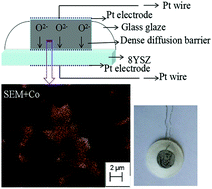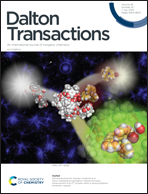Y-doped CaZrO3/Co3O4 as novel dense diffusion barrier materials for a limiting current oxygen sensor
Abstract
Herein, we illustrate a feasible strategy to strengthen the gas sensing of Y-doped CaZrO3 (YxCa1−xZr0.7O3−δ (x = 0.05, 0.06, and 0.07))/0.1Co3O4 used as sensing materials. This compound was prepared via a solid-state reaction technique. The structural, morphological, electrical, and sensing features such as phase identification, microstructure, ionic conductivity, total conductivity and sensitivity of the fabricated sensors were evaluated via X-ray diffraction, scanning electron microscopy, electron-blocking method, electrochemical impedance spectroscopy and cyclic voltammetry. In addition, the influence of the Y-dopant on the properties of YxCa1−xZr0.7O3−δ/Co3O4 was thoroughly studied. XRD results revealed the formation of the orthorhombic perovskite phase of YxCa1−xZr0.7O3−δ. Moreover, the obtained results from the electrical properties elucidated high electronic and low ionic conductivities, and small polaron conduction of YxCa1−xZr0.7O3−δ/Co3O4. Furthermore, the results confirmed an excellent limiting current plateau for the fabricated oxygen sensor based on YxCa1−xZr0.7O3−δ/Co3O4. In particular, experimental observation indicates that Y-doping at the Ca site and/or Zr site might be difficult.



 Please wait while we load your content...
Please wait while we load your content...